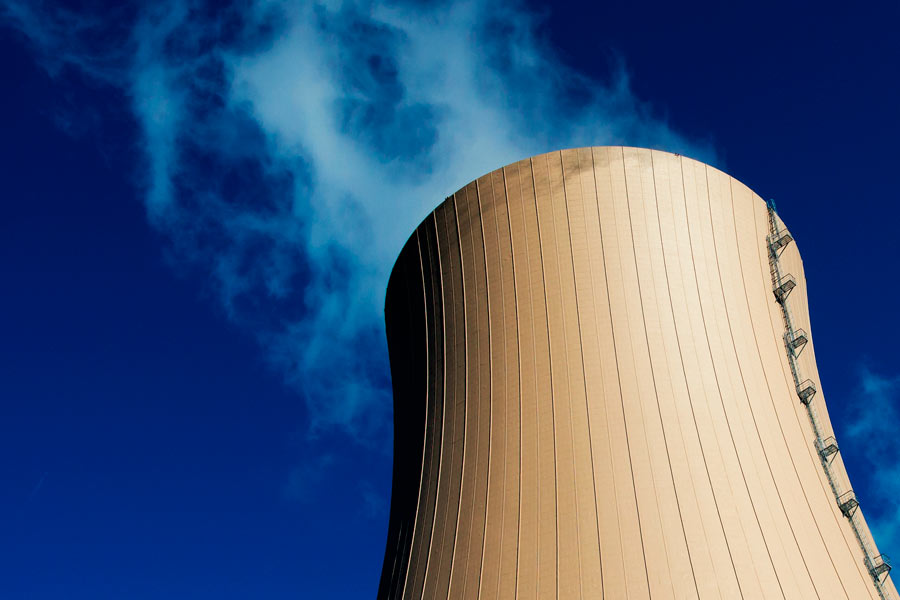This article was originally published by The Hill Times on December 2, 2019. It is written by Babatunde Olateju, Senior Research Associate at the Conference Board of Canada.
Nuclear energy is a complex discussion. But it’s an important consideration as Canada pursues a clean energy growth economy.
Canada’s nuclear energy industry has a storied history. The industry’s prominent decades spanned the 1940s to the early 1990s and involved the domestic deployment and international export of its flag ship technology i.e., the Canada Deuterium Uranium (CANDU) reactor. However, the last three decades have been sobering for the industry. No new CANDU plants have been built in Canada and China was the last country to procure a CANDU reactor in 1996.
Times have changed. Nuclear innovation and climate change have rekindled industry activity and are providing a window of opportunity. In this new era, the challenges and opportunities remain formidable. What’s required is a critical mass of federal, provincial and private-sector actors to provide solutions. The nuclear renaissance is being led by the resurgence of small modular nuclear reactors (SMRs). SMRs are the industry’s response to high capital costs, prolonged construction lead times, safety, and radioactive waste management concerns associated with large reactors (including CANDUs). A global nuclear energy innovation race to position SMRs for commercial deployment in the 2020s has started.
Canada’s emissions must fall from 716 million tonnes of CO2e in 2017 to 511 million tonnes by 2030, to uphold its Paris commitments. SMRs have the ability to replace carbon-intensive coal, natural gas or diesel power with zero-emissions, non-intermittent electricity.
Russia has completed the construction of a first of a kind (FOAK) commercial SMR plant. China has constructed a demonstration SMR and is in the start-up phase. Private-sector entities supported by the
Canadian Nuclear Laboratories are expected to demonstrate SMRs in Canada by 2026. While there’s a lot of excitement and activity, demonstration doesn’t guarantee commercialization. Financing and international competitiveness remain crucial in determining the industry’s fate. Industry consolidation is expected in the pre-commercial phase. Currently, more than 50 different SMR entities with proposed designs, are seeking billion-dollar investments in research, development and demonstration.
Only a handful will survive in the quest for capital. In the post-commercial phase, the SMR litmus test will be its success in broadening its financing base beyond state entities to include private-sector financiers like banks and institutional investors. The ability to demonstrate cost-competitiveness relative to renewables and natural gas will be key. Given its zero-emissions attributes and innovations that address safety and waste, the industry should also challenge barriers to environmental, social and governance (ESG) finance. And finally, insurability of SMRs will be important for the industry’s long-term future. From a value chain perspective, we still have some hard questions to resolve in Canada. Why doesn’t Canada have a uranium (nuclear fuel) enrichment facility to capture greater economic value domestically?
As the second largest producer of uranium, we exported 76 per cent of our output in 2018, all of which was enriched elsewhere. Nuclear energy produced 10 per cent of global electricity in 2018 and 80 per cent of the global nuclear fleet consumed enriched uranium. The majority of SMR designs will also require enriched uranium.
More questions. Who will build the plants to manufacture SMR components and fuel assembles? Is our domestic market large enough to “pull” the investment capital required? Can our private-sector SMR entities compete with state-owned actors abroad? There are no CANDU-based SMR designs in active development. What is the future of ‘Brand Canada’ in the nuclear arena beyond CANDU? Since Russia, South Korea, and China have been capturing new international markets and building nuclear reactors more cheaply, answers are needed soon.
Canada’s emissions must fall from 716 million tonnes of CO2e in 2017 to 511 million tonnes by 2030, to uphold its Paris commitments. SMRs have the ability to replace carbon-intensive coal, natural gas or diesel power with zero-emissions, non-intermittent electricity. They could also produce zero-emissions steam and hydrogen for industrial applications. And yet, climate change policies in Canada by and large exclude nuclear energy, except in Ontario and New Brunswick. Clearly, ability is not legitimacy.
Perceptions and social factors that currently impede nuclear energy’s growth in Canada also need to be unpacked and thoroughly addressed. A Canadian SMR industry doesn’t necessarily need pan-Canadian consensus. It does need a Canadian coalition determining what’s required to move forward. There are some green shoots in this regard. Natural Resources Canada and interested provincial and territorial stakeholders produced an SMR Roadmap in 2018. While this was a good start, a critical mass of willing and committed actors for the long-haul has yet to emerge.
Nuclear energy is a complex discussion. But it’s an important consideration as Canada pursues a clean energy growth economy. Platforms for constructive and action-oriented dialogue are needed. A clear definition of what success means for the industry and Canada is needed. Without them, voices in echo-chambers will continue to echo, while Canada’s nuclear industry grinds to a silent halt.



Comments